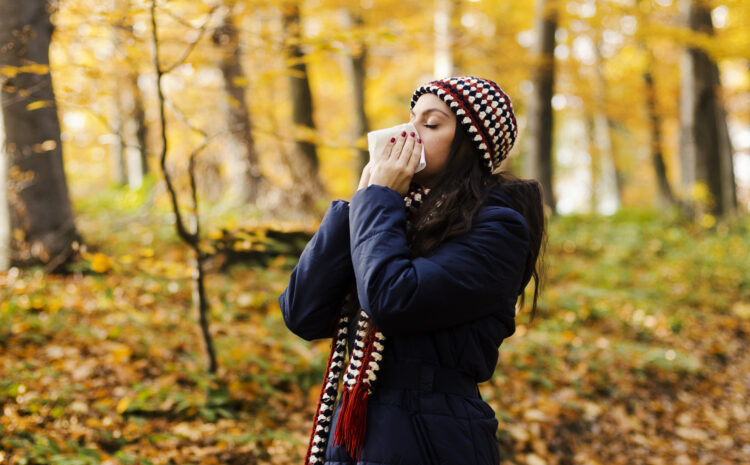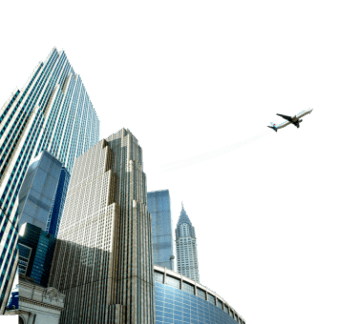
Autumn, with its crisp air and colorful foliage, is a season many eagerly await. However, for a significant portion of the population, fall is synonymous with a different kind of symphony—the cacophony of sneezes and sniffles. In this blog post, Dr. Tyler Basen discusses the puzzling world of fall allergies, exploring the reasons behind their notorious reputation.
As the leaves gracefully descend, painting the landscape in warm hues, an invisible adversary lurks. The brisk breeze carries not only the sweet scent of autumn but also microscopic particles that trigger a cascade of allergic reactions. It’s a season where nature’s beauty and the body’s defenses collide, creating a narrative of discomfort for those susceptible to fall allergies.
The allure of fall, with its outdoor festivities and pumpkin patches, becomes a double-edged sword for many individuals. The scent of cinnamon and the taste of apple cider are accompanied by the persistent itch of watery eyes and the incessant rhythm of sneezes. Yet, understanding the intricacies of why allergies peak during this season can empower us to navigate this vibrant time of the year more effectively.
In the following sections, we will peel back the layers of fall allergies, exploring the hidden culprits, the internal battles within our immune system, and the environmental factors that contribute to the seasonal symphony of sniffles. So, grab a cozy blanket, sip on your favorite pumpkin spice latte, and let’s embark on a journey to unravel the mystery of why fall allergies cast a shadow on this otherwise enchanting season.
The Hidden Culprits
While spring is often associated with pollen-induced allergies, fall has its own set of hidden triggers. Ragweed, the mischievous culprit, releases its pollen into the air during autumn, wreaking havoc on unsuspecting individuals. Ragweed is a major player in fall allergies, and its microscopic particles can travel for miles, turning the crisp fall breeze into an allergen-laden minefield.
The Battle Within
Understanding why fall allergies are particularly bad requires a journey into our immune system. The body, mistaking harmless substances like ragweed pollen for dangerous invaders, launches a full-scale attack. This immune response triggers the release of histamines, causing the familiar symptoms of sneezing, itching, and a runny nose. The battleground shifts from outdoor landscapes to within our own bodies, turning autumn into a season of internal warfare.
The Role of Mold
As leaves begin to fall, creating a picturesque carpet on the ground, mold spores seize the opportunity to flourish. Dampness and decaying vegetation create an ideal breeding ground for molds, contributing to the spike in fall allergies. From the cozy corners of your home to the damp forest floors, mold becomes an omnipresent force, aggravating allergic reactions and adding another layer to the fall allergy conundrum.
The Double Trouble of Indoor Allergens
While the beauty of fall beckons us outdoors, it’s crucial to recognize the indoor allergens exacerbating our symptoms. Dust mites, pet dander, and indoor mold can intensify allergic reactions. The transition from outdoor to indoor environments becomes a delicate dance, as we unwittingly carry outdoor allergens into our homes, creating a perfect storm for allergy sufferers.
Climate Change and Fall Allergies in the Fall
The changing climate has profound effects on our environment, and fall allergies are not exempt. Warmer temperatures extend the growing seasons of allergenic plants, prolonging our exposure to their pollen. Climate change also influences air quality, increasing the concentration of allergens in the atmosphere. As we witness the consequences of a warming planet, fall allergies serve as a poignant reminder of the interconnectedness between our environment and well-being.
Strategies for a Sneezefree Season
Navigating fall allergies requires a strategic approach. From monitoring pollen counts to investing in air purifiers, there are various tactics to minimize allergic reactions. It is suggested that keeping windows closed during peak pollen times, using high-efficiency particulate air (HEPA) filters, and maintaining a clean living environment. By adopting these strategies, you can create a sanctuary amidst the allergen-laden ambiance of fall.
The Psychological Impact
Beyond the physical toll, fall allergies can have a psychological impact on individuals. Constant sneezing, fatigue, and irritability can take a toll on mental well-being. The frustration of dealing with seasonal allergies year after year can lead to a diminished quality of life. Recognizing and addressing the psychological aspects of fall allergies is an essential component of holistic allergy management.
Embracing Allergies in the Fall
As we uncover the intricacies of fall allergies, it’s important to find ways to enjoy the season despite the challenges. From embracing alternative outdoor activities to exploring allergen-friendly recipes, there are numerous ways to savor the beauty of autumn without succumbing to the sneezes. By adopting a positive mindset and implementing effective allergy management strategies, you can turn fall into a season of joy rather than a time of discomfort.
Conclusion
In conclusion, fall allergies may cast a shadow over the season, but with knowledge and proactive measures, you can navigate this challenging time with resilience. Understanding the hidden culprits, the internal battles within our immune system, and the role of environmental factors empowers us to take charge of our well-being. So, let the leaves fall and the ragweed pollinate – armed with information, you’re ready to face the symphony of sneezes and emerge victorious.
If you have more questions about why your allergies are bad in the fall, please contact us. Pacific Allergy & Asthma would be more than happy to assist and answer any questions today!




